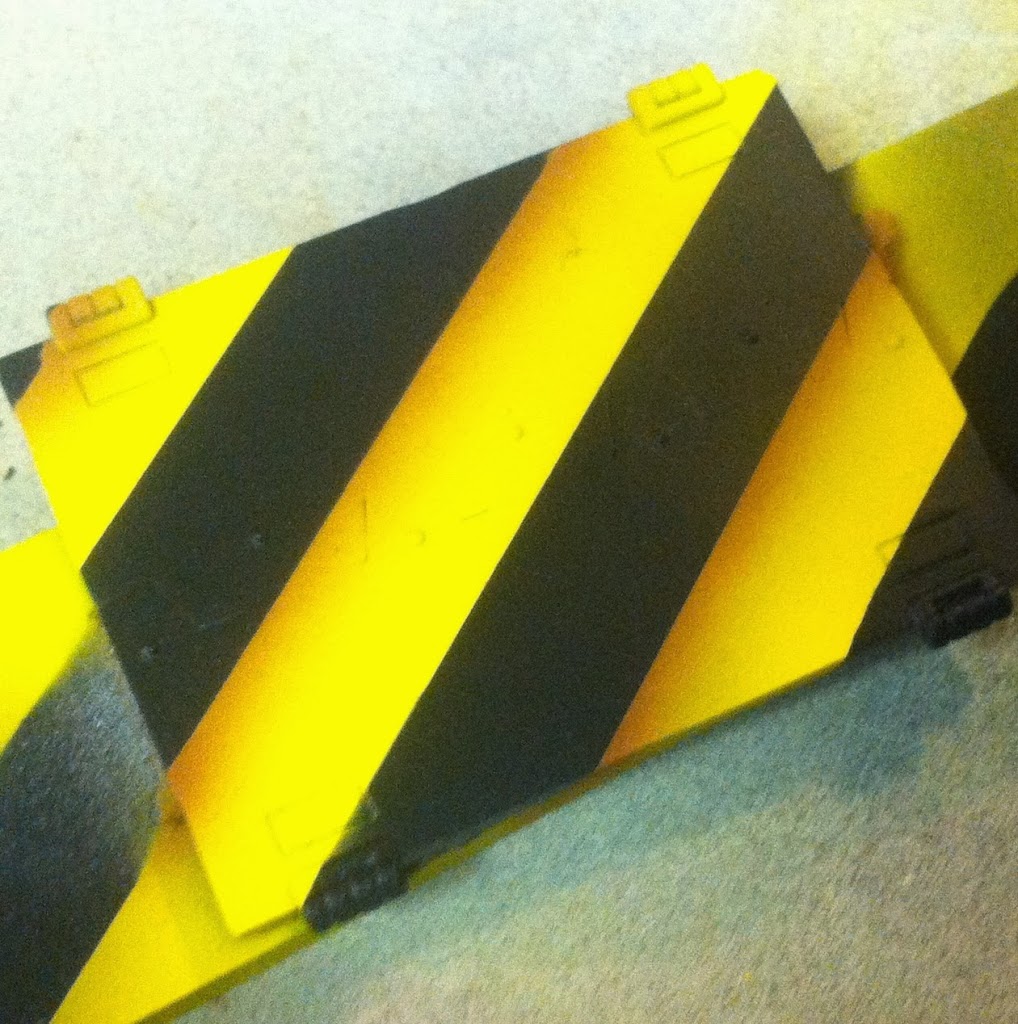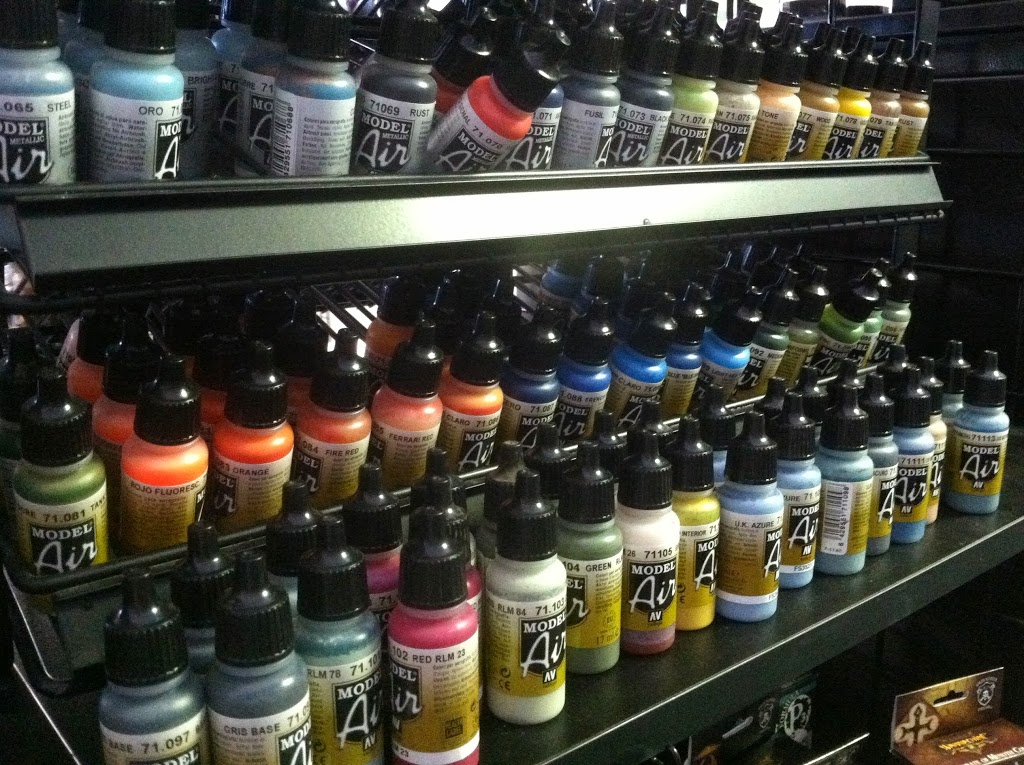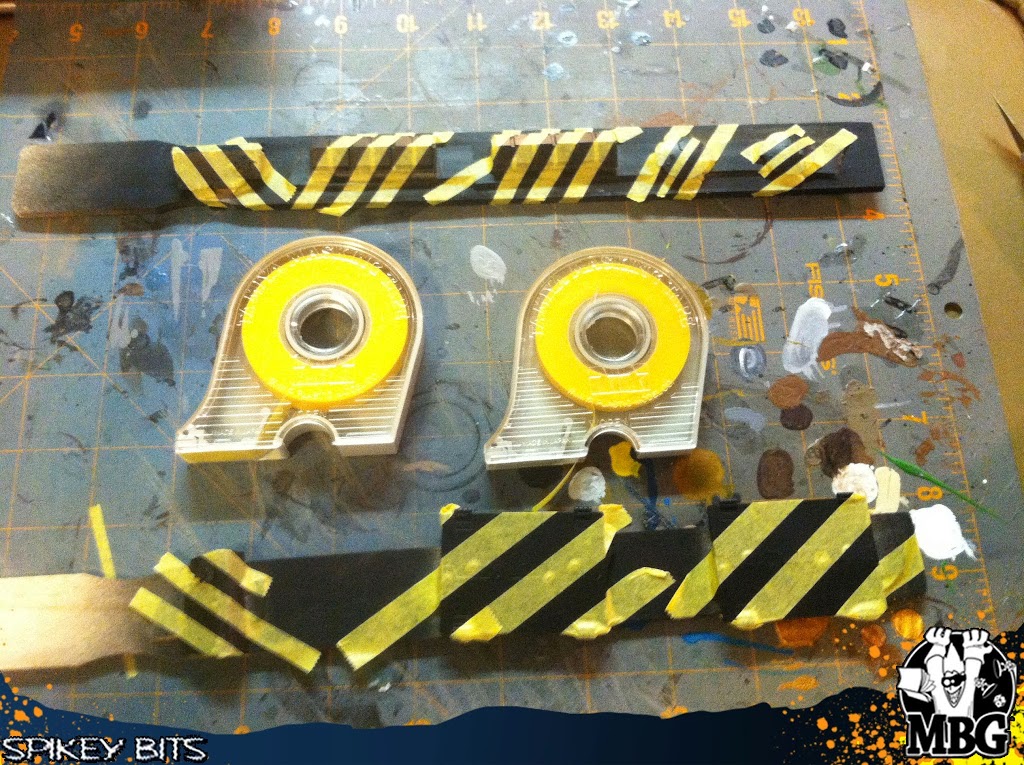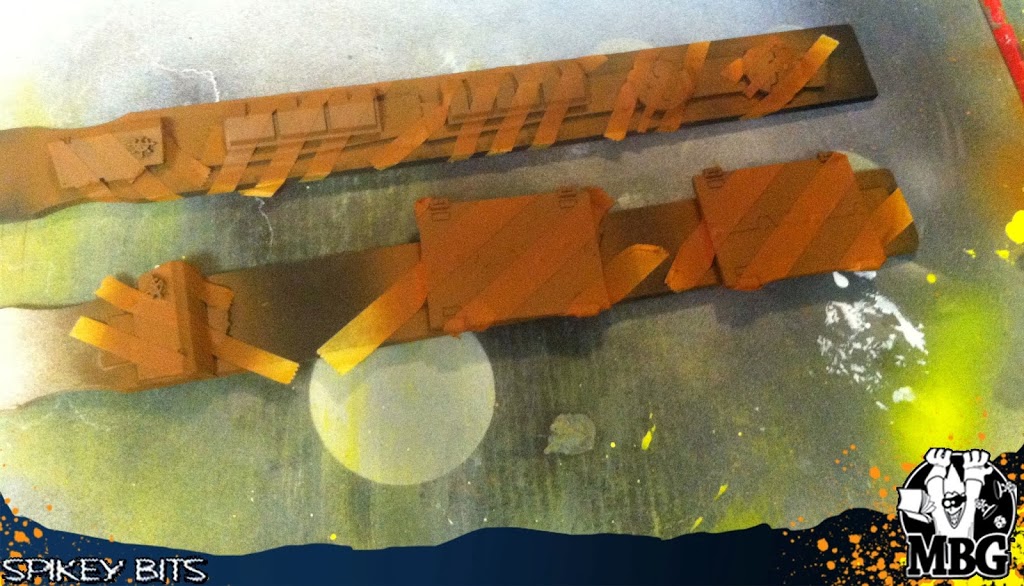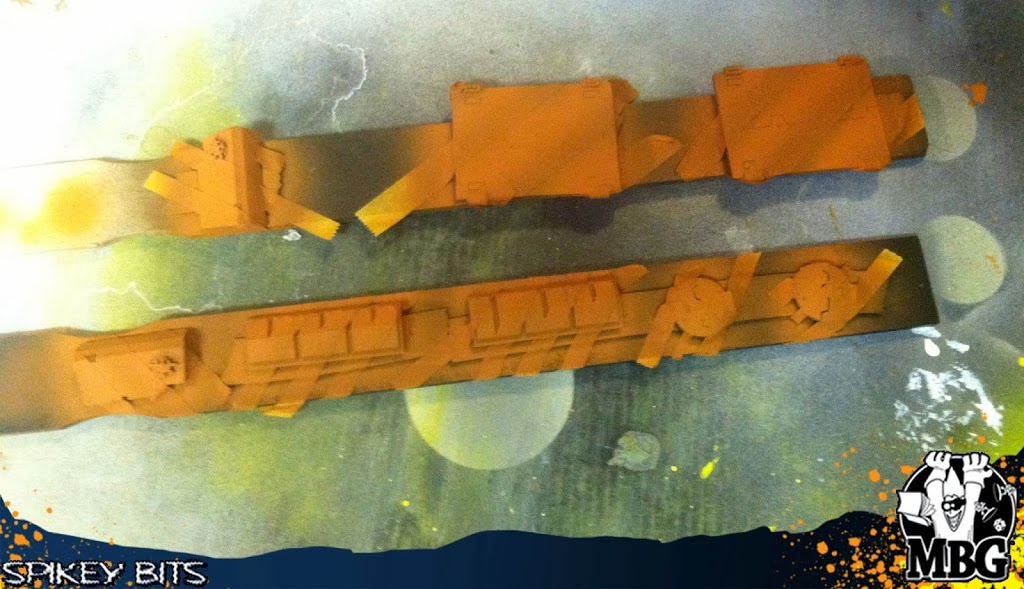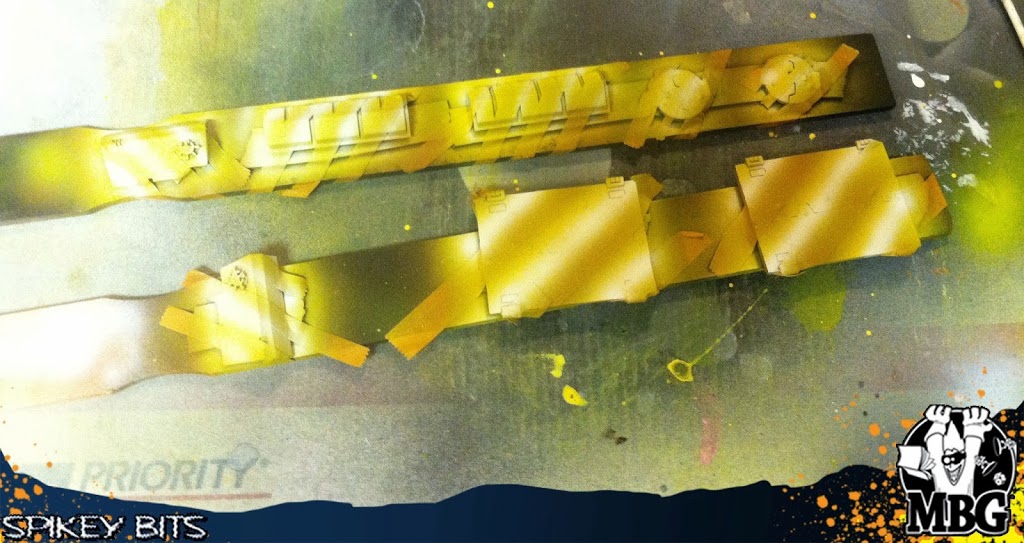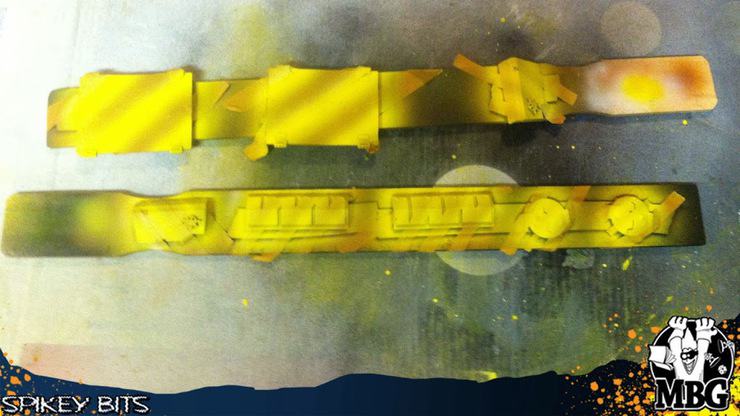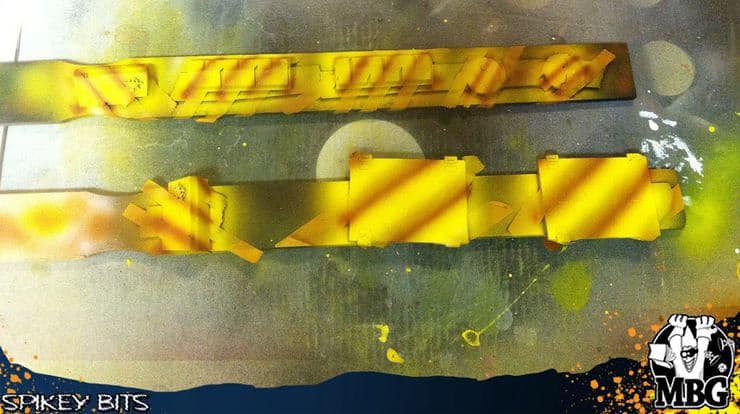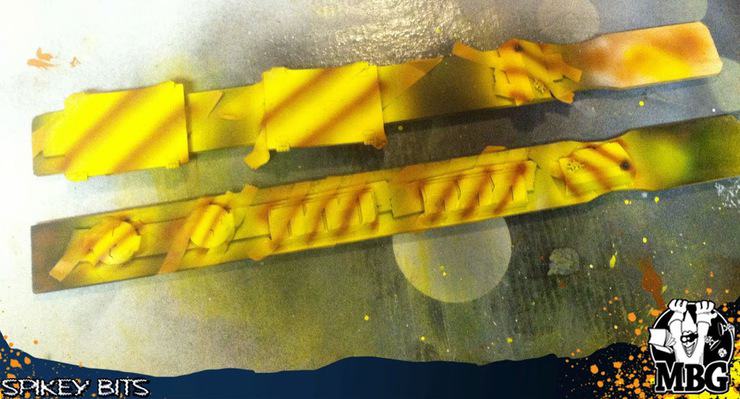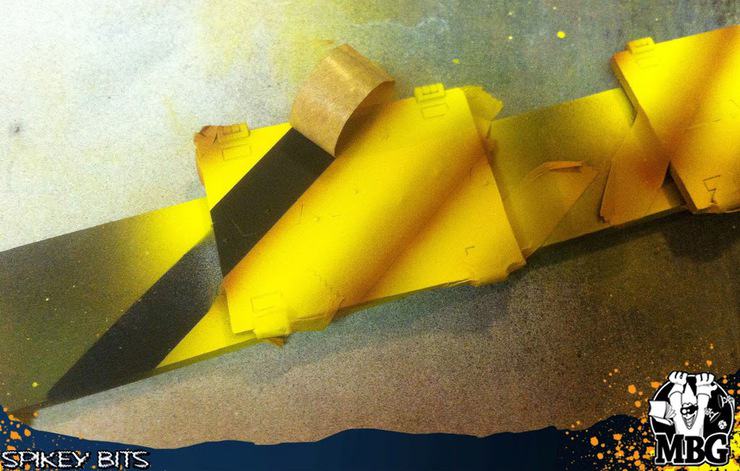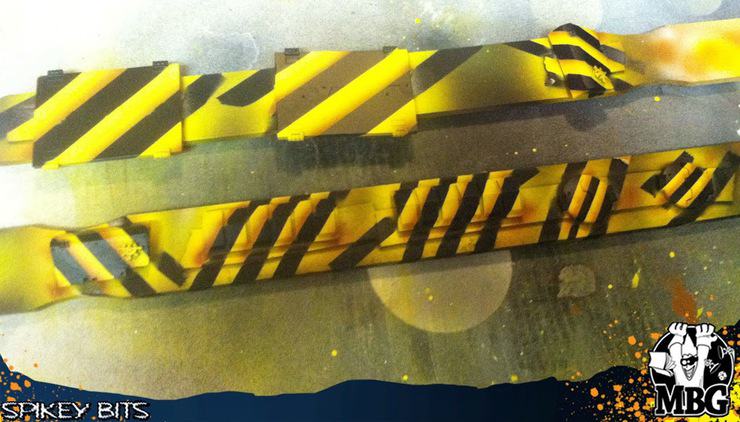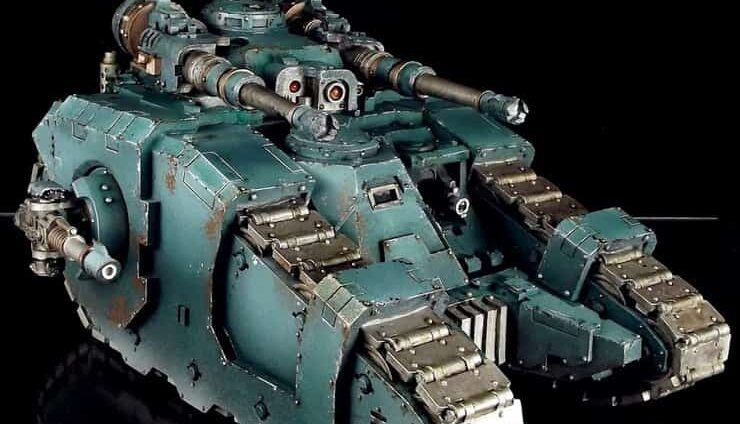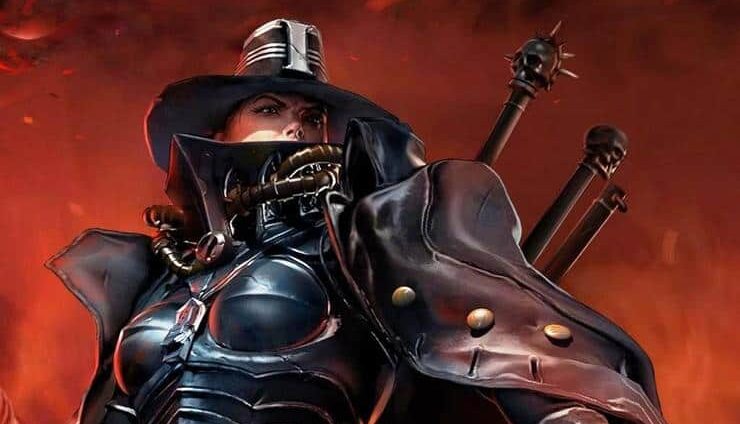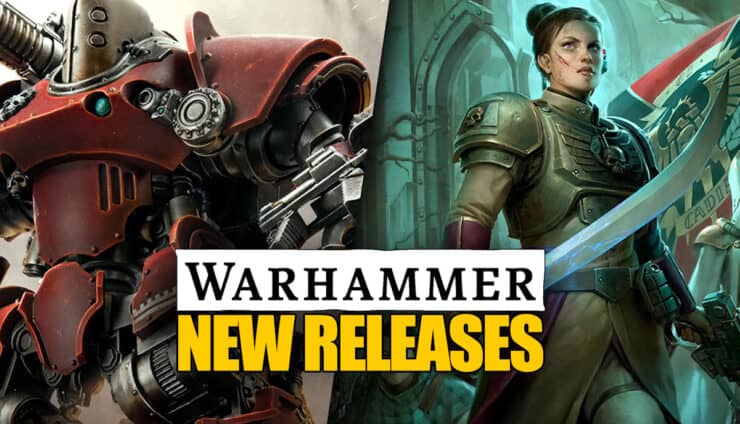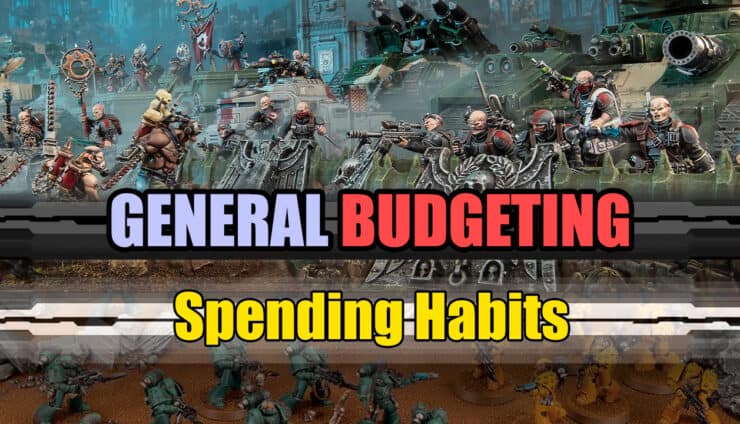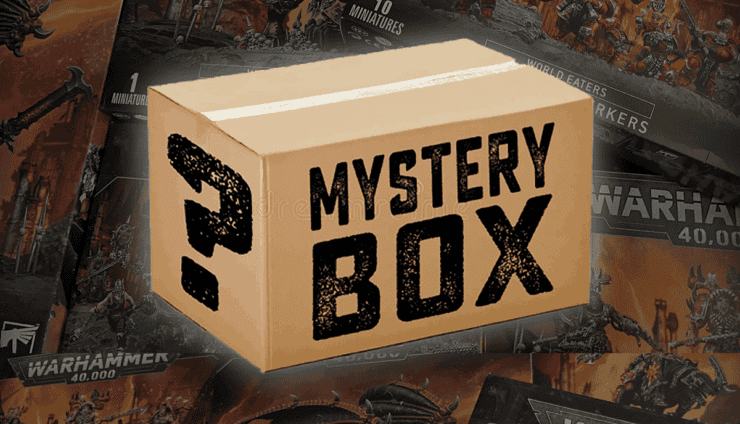Ten years ago I spent nearly a month painting my Iron Warriors army, and honestly it was mostly time spent just painting yellow.
Fast forward to today, and there is so many painting aids that really it can take as little as a weekend to paint a 1850 or 2000 point army if you’re properly motivated (thank you Army Painter sprays and color match paint pots).
Plus airbrushing is even more mainstream now, with full lines of Airbrush paints from Vallejo and Badger making it even easier to master that technique as well!
Recently I wanted to try my hand at airbrushing some Iron Warrior vehicles, and while I was pretty confident at my metal painting technique, I was slightly worried my yellows wouldn’t turn out that well.
However after I finished hazard striping all the hatches and armor plates I needed, I was pretty happy with the result!
So I thought I would share how I did it with you all, as yellow is one of the three “axis of evil colors” that I hate to paint (White and Red can also be difficult to paint). I hope you enjoy the tutorial!
Paints Used
Army Painter Black Primer (with accompanying paint pot color for touch-ups)
Reaper Master Series Orange Brown
Reaper Master Series Harvest Brown
Citadel Flash Gitz Yellow
Vallejo Air Color White
Badger Minitaire Gloss Coat
Applying the Paint
To help with holding the parts while I airbrushed them, I used double stick tape to secure all the parts to wooden paint stirrers (the kind you get when you buy gallons of latex paint at Home Depot etc..).
First off I primed all the parts with Army Painter black primer. This was to ensure any touch ups I would have to do with a brush would match the black from the primer, and not be a slightly different shade.
Then I daftly taped off sections to remain black, while exposing areas to apply yellow to. Since I would be going from Black to Yellow, I knew I would have to use a few browns to assist me in “getting there” from such a dark color.
While this method is challenging, it seemed to be the least risky as I’d rather not mess up painting black over yellow and have to repeat any work I’ve already did (or accidentally pull up any of my yellow color when I removed the masking tape that I would need to cover over it).
Speaking of masking tape, I used some Tamiya pin striping tape to section off each piece because it’s cut to smaller widths, comes in a convenient dispenser, and has a low tact (grip) for easy-ish removal over existing work.
First off I coated all exposed areas with Reaper Orange Brown
Next I coated everything with Reaper Harvest Brown, but left just a little bit towards the bottom the of each piece the first color.
Then I faded in some Flash Gitz Yellow (which looked very subdued over the browns) again with the fade towards the tops of the pieces.
After that I started shading towards the top of each part with some of the Vallejo Air White, taking care to fade over the existing yellow browns for the last step. This is because I would just be going back over this with the same yellow in an attempt to bring out the actual color of the yellow.
Again I applied Flash Gitz yellow, but only over the parts that I had just sprayed white!
Now it was time to shade the parts as I took them about as high as I thought I could go with the color. So I started by fading the darker brown (Harvest) back towards the bottoms of each piece.
Then lastly to clean up the fades I blended the Flash Gitz back between the new darker brown, and existing brown yellows.
When I’m done with any airbrush work I always spray on some gloss varnish through the airbrush to help protect the thin layers of paint that had been applied. I do it from about 8-9 inches away to mostly avoid any super shiny build-up, but I always apply some matte coat as well to the pieces upon completion of the project regardless to protect the brush work and dull down any gloss that does get though.
After the varnish dried I carefully peeled back all the tape to reveal all the work, and I was pretty happy with the results!
So that’s pretty much it, Hazard Stripes can be pretty easy to airbrush with a little patience and the right set up!
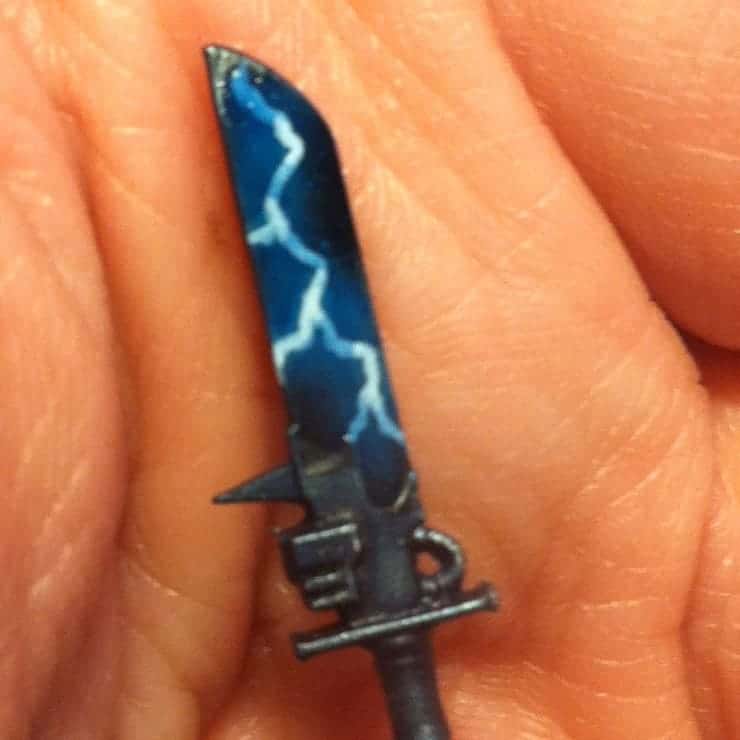
From Eldar to Grey Knights to Daemons- we got you covered! -MBG
